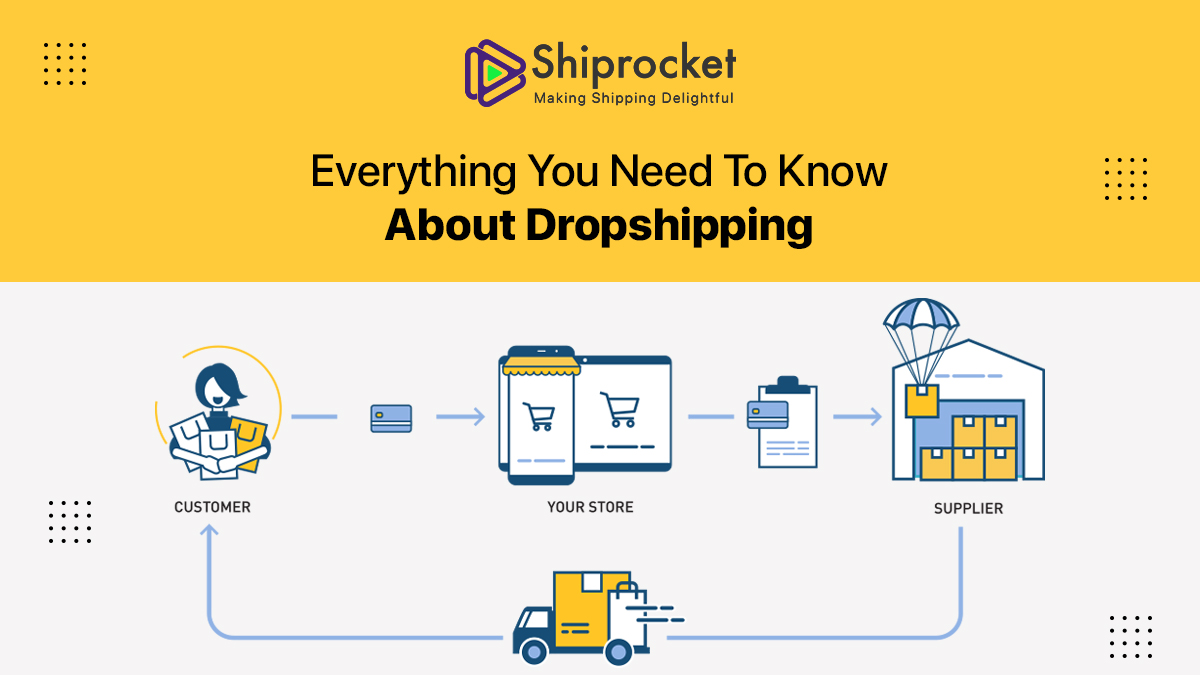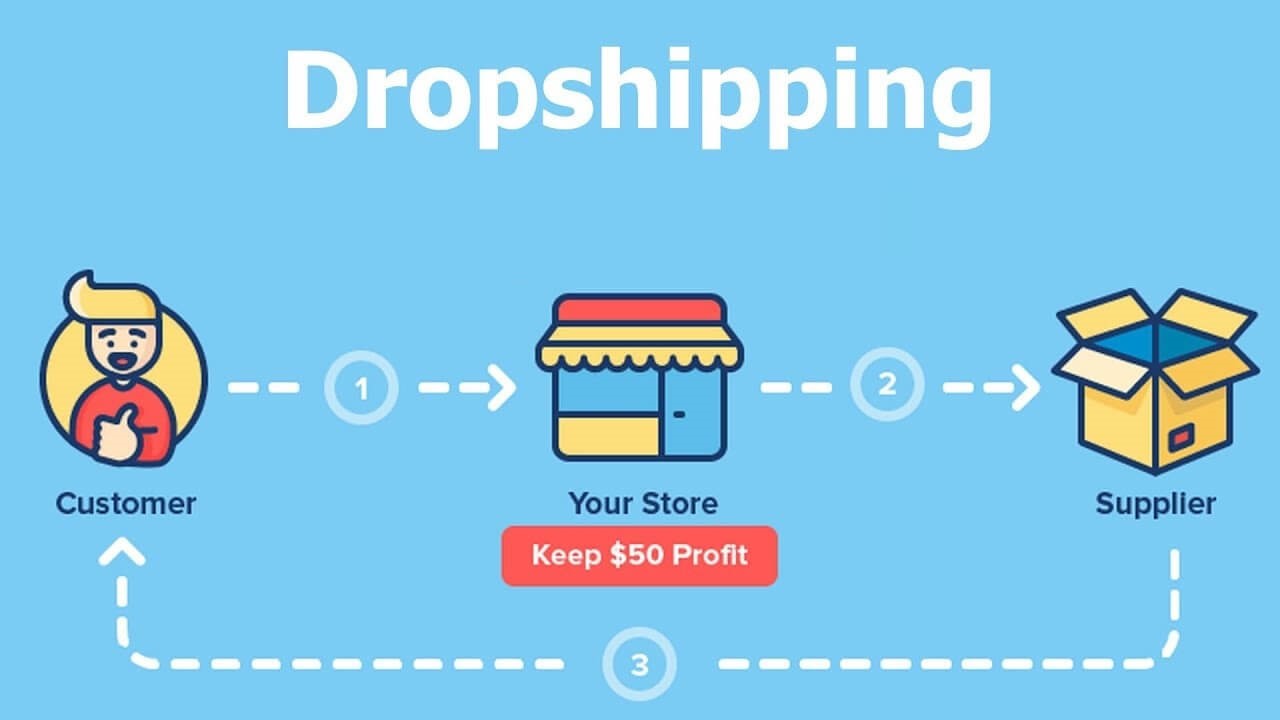Understanding the Basics of Ecommerce and Online Marketing
In today’s digital age, building a profitable online business is a tantalizing prospect for entrepreneurs. With the rise of ecommerce and online marketing, the opportunities for success are vast and varied. However, with so many options available, it can be overwhelming to choose the right business model. Two popular options that have gained significant attention in recent years are drop shipping and affiliate marketing. But what exactly are these models, and how do they differ? In this article, we will delve into the world of ecommerce and online marketing, exploring the ins and outs of drop shipping and affiliate marketing, and helping you decide which path is right for your online business.
Ecommerce, short for electronic commerce, refers to the buying and selling of goods and services over the internet. Online marketing, on the other hand, encompasses the various strategies and techniques used to promote and sell products or services online. Both drop shipping and affiliate marketing are forms of ecommerce and online marketing, but they operate in distinct ways. By understanding the basics of ecommerce and online marketing, you can better appreciate the benefits and drawbacks of each model and make an informed decision about which one to pursue.
Drop shipping and affiliate marketing are often pitted against each other, with proponents of each model touting its advantages. However, the reality is that both models have their strengths and weaknesses. By examining the pros and cons of each model, you can gain a deeper understanding of which one aligns with your business goals and objectives. In the following sections, we will explore the ins and outs of drop shipping and affiliate marketing, highlighting their benefits, drawbacks, and key differences.
What is Drop Shipping: How it Works and its Benefits
Drop shipping is a popular ecommerce business model that allows entrepreneurs to sell products without holding any inventory. In a drop shipping arrangement, the seller partners with a supplier who ships products directly to the customer. This model eliminates the need for inventory storage and management, making it an attractive option for those who want to start an online business with minimal upfront costs.
Here’s how drop shipping works: the seller creates an online store and adds products from a supplier to their catalog. When a customer places an order, the seller forwards the order and shipping information to the supplier, who then ships the product directly to the customer. The seller never sees or handles the product, and the supplier is responsible for packaging and shipping.
The benefits of drop shipping are numerous. For one, it eliminates the need for inventory storage and management, which can be a significant cost savings. Additionally, drop shipping allows sellers to offer a wide range of products without having to hold inventory, making it easier to test new products and markets. Finally, drop shipping can be a low-risk way to start an online business, as the seller is not responsible for inventory costs or shipping logistics.
Examples of successful drop shipping businesses include online retailers like Wayfair and Zappos, which use drop shipping to offer a wide range of products to their customers. Other successful drop shippers include entrepreneurs who have built niche stores around specific products or markets, such as outdoor gear or pet supplies.
While drop shipping can be a lucrative business model, it’s not without its challenges. Sellers must carefully select suppliers who can provide high-quality products and reliable shipping, and they must also be prepared to handle customer service issues that may arise. However, for those who are willing to put in the work, drop shipping can be a profitable and sustainable way to build an online business.
The Pros and Cons of Affiliate Marketing: Is it Right for You?
Affiliate marketing is a popular online business model that involves promoting products or services from another company and earning a commission on sales. In affiliate marketing, the affiliate marketer does not own the product or service, but rather promotes it to potential customers and earns a commission on each sale made through their unique affiliate link.
One of the main benefits of affiliate marketing is that it allows entrepreneurs to promote products without holding any inventory. This eliminates the need for inventory storage and management, making it a low-risk way to start an online business. Additionally, affiliate marketing can be a lucrative way to earn passive income, as affiliates can earn commissions on sales without having to actively work on the sale.
However, affiliate marketing also has its drawbacks. For one, affiliates have limited control over the product or service being promoted, which can make it difficult to build trust with potential customers. Additionally, affiliate marketing can be highly competitive, with many affiliates promoting the same products and competing for the same customers.
Despite these challenges, many entrepreneurs have found success with affiliate marketing. For example, Amazon’s affiliate program is one of the largest and most successful affiliate programs in the world, with millions of affiliates promoting Amazon products and earning commissions on sales. Other successful affiliate marketers have built niche websites and social media followings, promoting products and services to their audience and earning commissions on sales.
When considering affiliate marketing as a business model, it’s essential to weigh the pros and cons carefully. While affiliate marketing can be a lucrative way to earn passive income, it requires careful planning and execution to succeed. By understanding the benefits and drawbacks of affiliate marketing, entrepreneurs can make an informed decision about whether this business model is right for them.
Key Differences Between Drop Shipping and Affiliate Marketing
When it comes to building a profitable online business, understanding the key differences between drop shipping and affiliate marketing is crucial. While both models have their own advantages and disadvantages, they differ significantly in terms of product ownership, shipping responsibilities, and profit margins.
One of the main differences between drop shipping and affiliate marketing is product ownership. In drop shipping, the seller owns the product and is responsible for shipping it to the customer. In affiliate marketing, the affiliate marketer does not own the product and is only responsible for promoting it to potential customers. This difference in product ownership affects the level of control the seller has over the product and the shipping process.
Another key difference between drop shipping and affiliate marketing is shipping responsibilities. In drop shipping, the seller is responsible for shipping the product to the customer, which can be time-consuming and costly. In affiliate marketing, the affiliate marketer is not responsible for shipping the product, as the product owner handles shipping and customer service.
Profit margins are also a key difference between drop shipping and affiliate marketing. In drop shipping, the seller can earn a higher profit margin by selling products at a markup. In affiliate marketing, the affiliate marketer earns a commission on sales, which can be a lower profit margin than drop shipping.
For example, let’s say an entrepreneur wants to sell a product that costs $10 to produce. In drop shipping, the entrepreneur could sell the product for $20 and earn a profit margin of 50%. In affiliate marketing, the entrepreneur might earn a commission of 10% on sales, which would be $2 per sale.
Understanding these key differences between drop shipping and affiliate marketing can help entrepreneurs make an informed decision about which business model is right for them. By considering factors such as product ownership, shipping responsibilities, and profit margins, entrepreneurs can choose the model that best aligns with their business goals and objectives.
How to Choose Between Drop Shipping and Affiliate Marketing
Choosing between drop shipping and affiliate marketing can be a daunting task, especially for entrepreneurs who are new to ecommerce and online marketing. However, by following a step-by-step guide, you can make an informed decision about which business model is right for you.
Step 1: Evaluate Your Target Audience
Before choosing between drop shipping and affiliate marketing, it’s essential to evaluate your target audience. Who are your potential customers? What are their needs and preferences? What products are they interested in buying? By understanding your target audience, you can determine which business model will best meet their needs.
Step 2: Select a Product or Niche
Once you have evaluated your target audience, it’s time to select a product or niche. What products do you want to sell? Are you interested in selling physical products or digital products? By selecting a product or niche, you can determine which business model will be most profitable.
Step 3: Choose a Marketing Strategy
After selecting a product or niche, it’s time to choose a marketing strategy. How will you promote your products to your target audience? Will you use social media, email marketing, or paid advertising? By choosing a marketing strategy, you can determine which business model will be most effective.
Step 4: Consider Your Resources
Finally, it’s essential to consider your resources. What is your budget for starting an online business? Do you have the time and expertise to manage a drop shipping business? By considering your resources, you can determine which business model will be most feasible.
By following these steps, you can make an informed decision about which business model is right for you. Whether you choose drop shipping or affiliate marketing, it’s essential to remember that both models require hard work and dedication to succeed.
Overcoming Common Challenges in Drop Shipping and Affiliate Marketing
Both drop shipping and affiliate marketing have their own set of challenges that entrepreneurs need to overcome to achieve success. Understanding these challenges and having strategies to overcome them can help businesses thrive in the competitive ecommerce landscape.
One of the common challenges in drop shipping is finding reliable suppliers. Suppliers who are not reliable can lead to delayed shipping, poor product quality, and ultimately, a negative customer experience. To overcome this challenge, it’s essential to research and carefully select suppliers who have a good track record of delivering high-quality products on time.
Another challenge in drop shipping is managing inventory and shipping. Since drop shippers don’t hold any inventory, they need to rely on suppliers to manage inventory levels and shipping. To overcome this challenge, drop shippers can use inventory management software to track inventory levels and shipping status in real-time.
Affiliate marketers also face challenges, such as generating traffic and converting visitors into buyers. To overcome this challenge, affiliate marketers can use various marketing strategies, such as social media marketing, content marketing, and paid advertising. They can also use analytics tools to track their website traffic and conversion rates, and make data-driven decisions to optimize their marketing strategies.
Customer service is another area where both drop shippers and affiliate marketers need to excel. Providing excellent customer service can help build trust and loyalty with customers, and ultimately, drive repeat business and positive word-of-mouth. To overcome customer service challenges, businesses can use customer service software to manage customer inquiries and issues, and provide multichannel support through phone, email, and chat.
In addition to these challenges, both drop shippers and affiliate marketers need to stay up-to-date with the latest trends and best practices in ecommerce and online marketing. This can include staying informed about changes in consumer behavior, new marketing channels, and emerging technologies. By staying informed and adapting to changes in the market, businesses can stay ahead of the competition and achieve long-term success.
Ultimately, overcoming challenges in drop shipping and affiliate marketing requires careful planning, execution, and ongoing optimization. By understanding the common challenges and having strategies to overcome them, businesses can build a solid foundation for success and achieve their goals in the competitive ecommerce landscape.
Success Stories: Real-Life Examples of Drop Shipping and Affiliate Marketing
While both drop shipping and affiliate marketing can be lucrative online business models, it’s essential to learn from entrepreneurs who have already achieved success in these fields. In this section, we’ll explore real-life success stories of entrepreneurs who have built profitable online businesses using drop shipping and affiliate marketing.
One successful example of a drop shipping business is Irwin Dominguez, who built a $1 million online store using Shopify and Oberlo. Dominguez’s store, which sells a variety of products, including fashion items and home goods, has become a model for other entrepreneurs looking to start a drop shipping business.
Another example of a successful drop shipping business is Anton Ivanov, who built a $500,000 online store using Shopify and AliExpress. Ivanov’s store, which sells a variety of products, including electronics and gadgets, has become a go-to destination for online shoppers looking for affordable products.
In the affiliate marketing space, one successful example is Michelle Schroeder-Gardner, who earns over $100,000 per month promoting financial products and services. Schroeder-Gardner’s website, Making Sense of Cents, has become a leading resource for individuals looking for financial advice and information.
Another example of a successful affiliate marketer is Pat Flynn, who earns over $100,000 per month promoting online courses and software products. Flynn’s website, Smart Passive Income, has become a leading resource for entrepreneurs looking to build online businesses.
These success stories demonstrate that both drop shipping and affiliate marketing can be lucrative online business models. However, they also highlight the importance of choosing the right business model for your online business. By understanding the pros and cons of each model and selecting the one that best aligns with your goals and target audience, you can build a profitable online business that generates significant revenue.
When it comes to building a successful online business, it’s essential to learn from entrepreneurs who have already achieved success. By studying their strategies, challenges, and lessons learned, you can gain valuable insights into what works and what doesn’t in the world of ecommerce and online marketing.
Ultimately, the key to success in both drop shipping and affiliate marketing is to choose a business model that aligns with your goals and target audience. By selecting the right model and executing a well-planned strategy, you can build a profitable online business that generates significant revenue and helps you achieve your financial goals.
Conclusion: Choosing the Right Path for Your Online Business
In conclusion, choosing the right business model for your online business is crucial for success. Both drop shipping and affiliate marketing can be lucrative options, but it’s essential to understand the pros and cons of each model and select the one that best aligns with your goals and target audience.
By understanding the key differences between drop shipping and affiliate marketing, including product ownership, shipping responsibilities, and profit margins, you can make an informed decision about which model is right for you. Additionally, by learning from successful entrepreneurs who have built profitable online businesses using these models, you can gain valuable insights into what works and what doesn’t.
Ultimately, the key to success in both drop shipping and affiliate marketing is to choose a business model that aligns with your goals and target audience. By selecting the right model and executing a well-planned strategy, you can build a profitable online business that generates significant revenue and helps you achieve your financial goals.
As you consider your options, remember that both drop shipping and affiliate marketing require careful planning, execution, and ongoing optimization. By staying focused on your goals and adapting to changes in the market, you can overcome common challenges and achieve long-term success.
Whether you choose drop shipping or affiliate marketing, the most important thing is to take action and start building your online business. With the right mindset and strategy, you can achieve success and build a profitable online business that generates significant revenue.
In the world of ecommerce and online marketing, there is no one-size-fits-all solution. By understanding the pros and cons of drop shipping vs affiliate marketing, you can make an informed decision about which model is right for you and start building a profitable online business that aligns with your goals and target audience.





